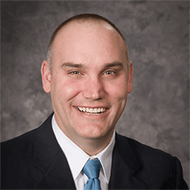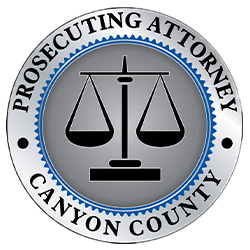Child Sexual Abuse
PROSECUTING ATTORNEYChild sexual abuse is the exploitation of a child under 18, for the sexual gratification of an adult or an older child. Often times the offender will use force, trickery, bribes, threats or will pressure the child into sexual awareness or activities. The abuse often begins gradually, with acts of inappropriate touching like tickling and will increase over time. Because of this, children often cannot tell when the touching began. Children normally do not tell about the abuse. When children do tell, it is a process, wherein they may disclose the least invasive touching first. Your reaction is critical. If you become angry or upset, it will impact whether the child continues to make disclosures.
Types of Sexual Abuse:
- Sexual touching and fondling
- Exposing children to pornographic materials
- Masturbating or being sexual in front of the child
- Photographing a child for sexual purposes
- Rape or attempted rape
- Verbal and emotional abuse of a sexual nature
Possible Signs of Sexual Abuse
Physical Indicators: |
Emotional Indicators: |
Behavioral Indicators: |
| Frequent urinary tract infections | Exceptional secrecy | Withdrawal from family, friends or usual activities |
| Bed wetting or soiling | Lacks concentration or has difficulty remembering | Excessive bathing or poor hygiene |
| Sleeping problems, nightmares or insomnia | Difficulty making decisions | Reluctance to undress |
| Rashes or itching in genital areas | Fearful of certain places, things or people | Avoidance of touch |
| Unexplained stomach aches, headaches or vomiting | Fear of bathroom or shower | Violence or aggressions against younger children |
| Difficulty walking or sitting | Receives gifts or money from a questionable source | Sexually aggressive or promiscuous behavior |
| Does not want to be left alone | ||
| Clingy, whiny | ||
| Self-esteem issues |
Additional Information on Sexual Abuse
Helpful Links
- Child Sexual Abuse

- Pandora’s Project: Online Support Group

- Q&A about Child Sexual Abuse

- What To Do If Your Child Discloses Sexual Abuse

- Coping with the Shock of Intrafamilial Sexual Abuse

- Understanding and Coping with Sexual Behavior Problems in Children

- Child Sexual Abuse: Coping with the Emotional Stress of the Legal System

- Sibling Sexual Abuse: A Parent’s Guide

Teaching children about sexual abuse can increase their awareness and coping skills. Children who are well-prepared are more likely to tell you if the abuse has occurred. In order to protect children, teach them:
- To feel good about themselves and know they are loved and deserve to be safe;
- The difference between safe and unsafe touches;
- The proper names for all body parts, so they can communicate clearly;
- That safety rules apply to all adults – not just strangers;
- That their bodies belong to them, and no one has the right to touch or hurt them;
- That they can say “no” to requests that make them uncomfortable – even from a friend or relative;
- To tell you if any adult asks them to keep a secret;
- That they are not bad or to blame for the sexual abuse;
- To tell someone they trust about abuse – teachers, Law Enforcement, friend, counselor, and faith leader – even if they are afraid of what might happen.
If a child trusts you enough to tell you about an incident of sexual abuse, you are in a position to help that child recover. These are suggestions to help you provide positive support.
- KEEP CALM. Children can mistakenly interpret anger as directed towards them.
- BELIEVE THE CHILD. In most instances, children do not lie about sexual abuse.
- GIVE POSITIVE MESSAGES. Tell them it is not their fault and that you are proud of them for telling.
- LISTEN to and ANSWER their questions honestly.
- RESPECT the child’s privacy.
- BE RESPONSIBLE. Report the incident to the authorities.
- GET HELP. Get counseling for your child. Make sure the counselor is specialized in helping victim of sexual abuse. Help is available.
| Barriers to Disclose – Why Children Don’t Tell | Breaking the Barriers – Why Children Do Tell |
|---|---|
| Children feel responsible | Children tell when they come into contact with someone who appears to “already know” |
| Children fear disbelief from adults | Children tell when they come into contact with a confident person who does not appear to be judgmental, critical, or threatening |
| Children believe threats from the offender | Children tell when they believe a continuation of abuse will be unbearable |
| Children avoid disappointing adults by reporting something repulsive | Children tell when physical injury occurs |
| Children resist talking about “nasty things” | Children tell if they receive sexual abuse prevention information |
| Children are handicapped in knowing how to describe what has happened to them | Children tell to protect another child |
| Children are taught not to “tattle” | Children tell if pregnancy is a threat |
| Children are taught to be respectful of adults. Children fear getting an adult in trouble or disobeying an adult who has requested secrecy | Children tell when they come into contact with someone who may protect them |
| Children are protective of the offender. Often the touching was only a small part of their relationship with the offender. Especially if the offender is a family member. | The most common way children tell is usually to a friend. The child is hoping this friend will tell an adult and it will come to light at that time. |
Common Myths and Misconceptions about Child Sexual Abuse
Myth: Children make up stories or lie about sexual abuse.
Fact: While children do make up stories, they seldom lie about sexual abuse. Moreover, children who have not been abused do not usually have explicit knowledge of intimate sexual behavior. Statistics indicate that most reports of child sexual abuse are true.
Myth: Abuse is most often committed by strangers.
Fact: Most abuse is committed by someone the victim/survivor knows and trusts.
Myth: Offenders look sleazy, cruel or unusual.
Fact: Offenders come from all walks of life and look like ordinary people. They can be fathers, grandfathers, uncles, brothers, stepfathers, mothers, grand mothers, aunts, sisters, stepmothers, babysitters, coaches, teachers, doctors, social workers, religious leaders, neighbors, etc….
Myth: The child or youth is at fault for encouraging or allowing the sexual abuse to happen.
Fact: Adults are responsible for their own behavior. A child or youth is never responsible for behavior displayed by an adult.
Myth: If the children do not want it, they could say, “Stop”.
Fact: Children do not generally question the behavior of adults. They are often coerced by bribes, threats and use of position of authority.
Myth: Sexually abused children and youth are scarred or damaged forever.
Fact: Many children and youth who have been victims of sexual abuse do heal and go on to lead normal lives like everyone else. In most cases, sexual abuse leaves no visible physical marks on a person, and no one will know that abuse has occurred unless a person is told.
Myth: Children and youth who have been sexually abused by a member of the same sex (or opposite sex) grow up to be homosexual.
Fact: The sex of the person who commits the abuse does not determine the victim’s sexual orientation.
Myth: Reporting is enough to stop the abuse.
Fact: While abuse may stop temporarily during an investigation, without treatment, repeat abuse is extremely high
Myth: Children and youth are sexually abused because their parents/caregivers neglected to care for, or supervise them properly.
Fact: Offenders use a range of tactics to gain access to their victims. The offender alone is responsible for what he does. Many offenders are experts in manipulating both the victim/survivor and the people who care for her/him.
Myth: Family Sexual abuse is an isolated, one-time incident.
Fact: For most victims, the abuse continues for years. In most cases, the offender will not stop until there is intervention.
Myth: An offender may be so drunk or high that he/she cannot be considered responsible for what he/she did.
Fact: With or without alcohol or drugs, the offender is responsible for his/her actions and will need specialized treatment for his/her offending behavior and for the alcohol and/or drug abuse.
SEX OFFENDERS DEPEND ON THE PERPETUATION OF THESE MYTHS TO ESCAPE DETECTION/PROSECUTION.
- Do not interview the child about details.
- Report to Law Enforcement.
- Believe your child. Do not blame your child for what happened.
- Inform the child they did well to tell and that you are sorry that this happened.
- Give your child reassurance and support that they are okay and safe.
- Tell the child you will do your best to protect them from further molestation. Instruct your child to tell you or a trusted adult immediately if the offender or anyone else attempts sexual molestation again or bothers them in any way.
- Respond to questions of feelings your child expresses about molestation with a calm, matter-of-fact attitude, but do not pressure your child to talk about it.
- The most common immediate problems of sexually molested children include changes in personality, sleep disturbances, irritability, loss of appetite, bed wetting, fears, acting like a younger child, changes in school behavior or relating to friends, and sexually acting out.
- Respect the privacy of the child by not telling a lot of people or letting other people question him/her.
- Try to follow regular routines at home (expect usual chores, bedtimes, rules).
- Inform brothers/sisters that something has happened to the child, but that she/he is safe now and will be okay. Do not discuss details of the assault with brothers and sisters. Make sure all children in the family are given enough information to protect themselves from the assailant.
- Take the time to talk over your feelings privately with someone you trust – your spouse, a friend, a relative, a counselor; express your feelings. Do not discuss the situation repeatedly in front of your child or children.
- Consult your physician regarding follow-up medical care.
- You may contact the Children’s Protective Services or the Canyon County Victim Witness Program for information and counseling referrals.
- Counseling is an important aspect in the process. Make sure the counselor is specialized is sexual abuse issues.
- Victims Compensation may assist with the victim’s counseling costs. Information concerning this program can be obtained from the State of Idaho Industrial Commission at (208) 334-2321.


Canyon County Victim Witness Unit
Office: 454-7391
Fax: 454-7474
Denise Himes (Unit Supervisor)
Christina Garcia (Spanish-speaking)
Jackie Smith
Teresa Sanchez(Spanish-speaking)
Loretta Stadler
Joana Torres-Fonseca (Spanish-speaking)
Address
1115 Albany St
Caldwell, ID 83605
Phone / Fax
P 208-454-7391
F 208-454-7474
Hours
Weekdays 8am - 5pm
(excluding holidays)